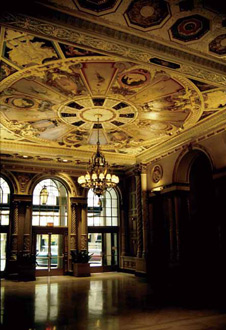 Consumer Standard
Consumer Standard
Higher resolution sometimes does not necessarily mean fewer cameras. “I've seen projects that went from SD to HD and kept the same number of cameras,” said Jeff Corrall, Product Line Manager for Edge Devices, March Networks. “Since HD is already in the consumer market, it is heading toward the economy of scale of analog. People don't use NTSC or PAL on their TV as much anymore, and in some devices, those standards are disappearing altogether.”
Other vendors felt that HD's advantage lies in enhancing surveillance, rather than replacement of SD cameras. “HD delivers more details per meter than SD and as such produces far better identification and recognition data at the same surveillance range, compared to an SD camera,” Crosby said.
For example, an HD sensor increases the number of pixels per meter, compared to an SD one using the same focal-length lens. As every doubling in resolution doubles the effective distance for focal length, an SD camera with a 36x lens delivers almost the same performance as an HD one with a 20x lens. “Greater surveillance range and more details delivered at the same range are, therefore, a performance leap, rather than a simple cost-reduction exercise,” Crosby said.
The standardization of HD has given it an edge over megapixel. “Megapixel has no standard; you don't have a screen for the 4:3 format any more,” said Iida Atsushi, PM of Security Solutions, Business and Professional Products for APAC, Sony Electronics. “That's why this year we didn't provide any SD cameras — they are all HD.”
While network HD and megapixel domes boost resolution, they cost more for smaller installations. “Some people are very happy with analog for their system; others have the infrastructure and requirement for IP,” said James Smith, European Marketing Manager, Samsung Techwin. “We look at what a dome has to achieve for the user and offer our customers a choice to do that.”
 Increased storage demand from megapixel recording requires bandwidth management options. “If you're looking at a street, you can select a portion at a higher resolution, and the rest at a lower resolution,” Smith said. “Multiple streams are also available so that video at different resolutions can be sent to different devices simultaneously if required. We can record events onto built-in memory cards in high resolution and stream live images to a control center in a lower resolution.”
Increased storage demand from megapixel recording requires bandwidth management options. “If you're looking at a street, you can select a portion at a higher resolution, and the rest at a lower resolution,” Smith said. “Multiple streams are also available so that video at different resolutions can be sent to different devices simultaneously if required. We can record events onto built-in memory cards in high resolution and stream live images to a control center in a lower resolution.”
Not every high-resolution dome has to be IP, as the HDcctv standard sends 720p and 1080p streams over existing coaxial cables. However, storage requires the dome to connect to an embedded HDcctv DVR, which is limited by a certain number of terabytes and is harder to expand compared to network storage, said Rich Huang, PM at EverFocus Electronics.
Hemispheric Domes
Hemispheric or fisheye cameras give operators a bird's-eye view on a scene. Any events that take place behind a fixed lens will not be captured; the fisheye lens overcomes this limitation.
However, fisheye cameras have sensitivity issues, which make them unsuited for outdoor applications. “The low-light performance is worse,” Atsushi said. Because of the lens optics, hemispheric domes are better suited for indoor installations in brightly lit areas.
The dewarping software for fisheye domes must transform the spherical dome image into a rectangular format for displays. “Hemispheric cameras enable users to see a big area,” said Erik Fr?nnlid, Director of Product Management, Axis Communications. “Unfortunately, the resulting resolution is low in pixels per square meter since the number of available pixels is spread over a huge area. Zoom can only be done digitally, and the result is a very low and, usually, unusable resolution.”